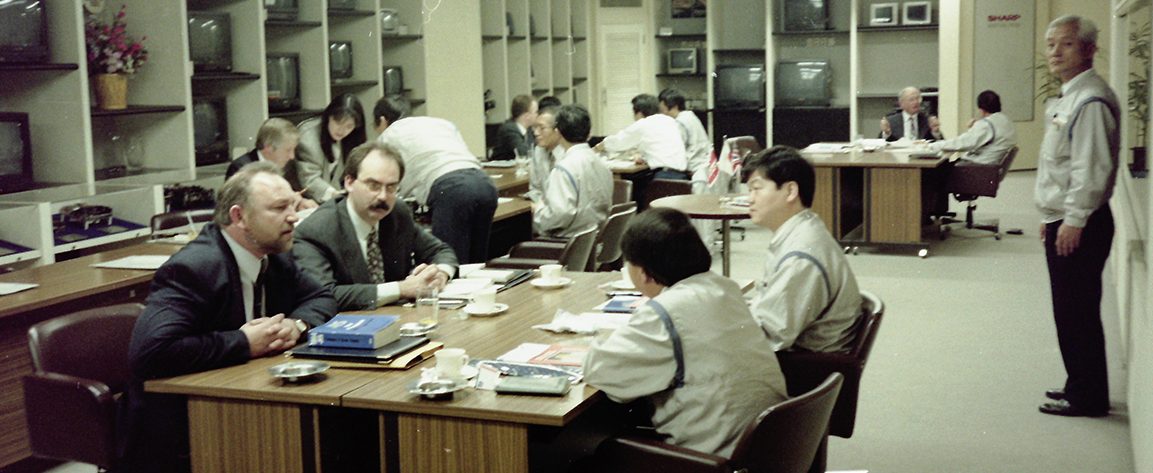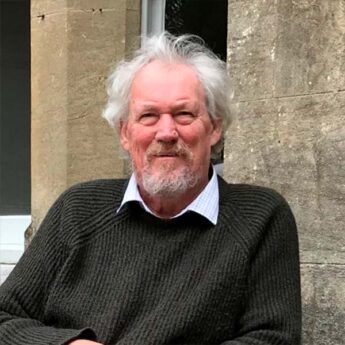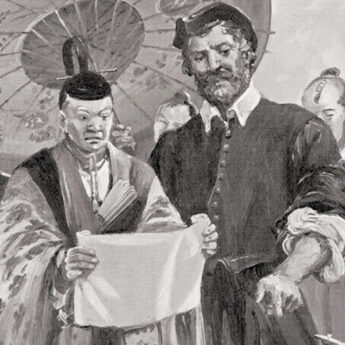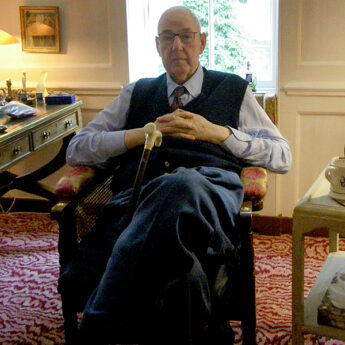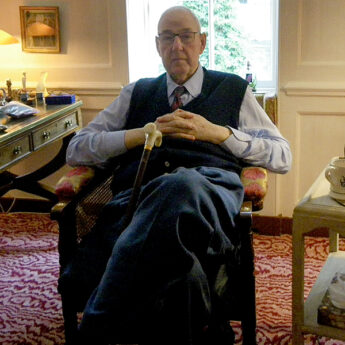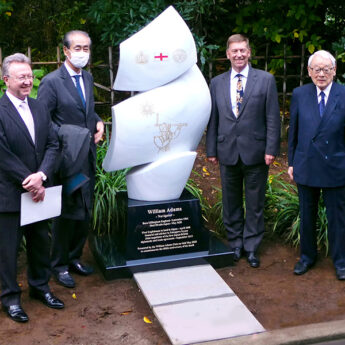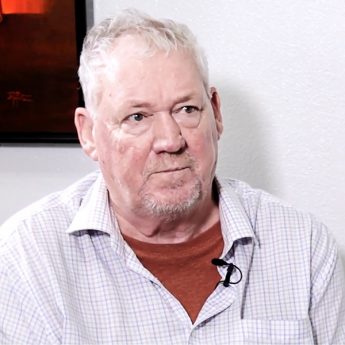
Prime Minister Tony Blair opened the British Industry Centre and
Electronics Link Asia Ltd (ELA) office in Yokohama in January 1998.
To mark the 70th anniversary of the British Chamber of Commerce in Japan this year, we are bringing you a range of articles looking at the history of the chamber and UK–Japan ties.
This month we present the second part of a chapter written by Peter Bacon MBE and originally published in Britain & Japan: Biographical Portraits Volume X, which was compiled and edited by Sir Hugh Cortazzi GCMG, former ambassador to Japan. The book was published in 2016 by Renaissance Books.
The article looks at how British electronic component manufacturers sought to sell their products to Japanese firms during the 1990s and the first decade of this century, the lessons they learned and successes they celebrated.
We would like to thank Sir Hugh and the Japan Society in London, owners of the book’s copyright, for allowing us to reproduce the following excerpt and for supporting our project. The first part of this piece was featured in the June 2018 issue of BCCJ ACUMEN. We will carry the third instalment in the August 2018 issue.
How to engage with the Japanese
The first lesson learnt was that business with the Japanese companies was really possible. We had to have good technology or products to offer. Meticulous preparation, persistence and willingness to answer the seemingly endless questions were needed. We had to understand that the Japanese companies, with which we wanted to do business, were totally committed to perfection, and that their questions were not intended to deter us but to ensure that we could meet their high standards.
Japanese companies such as Sony Corporation were ready to work with their UK suppliers to improve them. Long-term partnership, such a key feature of Japanese business, was seen as benefiting both sides. At one Japanese Electronics Business Association (JEBA) suppliers meeting at Panasonic Corporation facilities at Cardiff, the purchasing director Terry Davies explained to us that they had only “let go” of three suppliers in 20 years, and this was only after huge efforts had been made to try to keep them on.
In some cases, members of these missions found that they could succeed more quickly than they had expected, so long as they really understood what was required and responded quickly and flexibly. We also learnt the importance of strong personal relationships and came to realise that we should not depend on written contracts to do business. Members saw that those who spent time in growing these relationships gained long-term success. Complaints from Japanese customers should be used as a learning opportunity and responded to in the positive spirit intended. We were told that rather than see complaints as a negative, we should see silence as the real negative, in that the Japanese company had given up trying to improve us.
We also learnt about face, honne and tatemae, when to push and, for many suppliers, when to listen more … and how to listen. And the importance of after 5pm business discussions, the reason Kirin and Asahi [beers] are such vital participants in Japanese business life.
Next steps: Move to a business venture
I was encouraged by the British Embassy Tokyo to take this successful programme forward, and to persuade British companies to support this work financially, in other words to develop a business. This depth of involvement and continuous follow-up work for UK companies was beyond the resources that the Department of Trade and Industry (DTI) and the embassy could provide for just one business sector. But it was the route to success. So after my secondment from Koninklijke Philips N.V. to the DTI ended in 1996 I set up Electronics Link Asia Ltd (ELA).
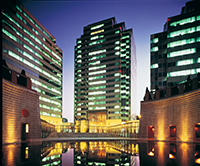
ELA’s office was in Yokohama’s British Industry Centre
Under the Action Japan programme there were up to nine other export promoters covering a variety of sectors. This led to the establishment of the British Industry Centre (BIC) in Yokohama, as a first base in Japan for UK electronics companies. Our next step to demonstrate our commitment was to set up an office for ELA in Japan. The natural place for this was the BIC, which was backed by the embassy under the ambassador’s leadership. Jon Elliott from the embassy provided effective support at working level.
The BCCJ in Tokyo managed the BIC under embassy supervision. DTI gave a financial guarantee to the landlord Nomura Holdings, Inc. As we grew our client list, we offered a base for any JEBA member visiting Japan and as a service to the DTI and the embassy continued to promote JEBA in Japan. The visibility of the British electronics industry had been low in Japan; JEBA helped to improve this.
Sir David Wright, the British ambassador at the time, opened our office at the BIC in January 1998, together with Kanoi Nobuo, executive vice-president of Sony and chairman of Aiwa. This followed immediately after the opening of BIC by Tony Blair, then British prime minister. Key UK clients were present including David Milne of Wolfson Electronics, and Rodney Scott of Philips Printed Circuits.
As Sir Ivor Cohen has explained [in Britain & Japan: Biographical Portraits Volume X — Part I: Selling to Japanese manufacturers investing in Britain], Mullard Ltd, as part of the multinational Philips Company, had an office in Japan, which was crucial for developing sales to the Japanese inward investors in the UK. This office, although located in Tokyo, was not a sales office for Japan as such. It was a liaison office, which engaged closely with the design centres of Japanese companies, so that the Philips components could be incorporated into the TV products at the design stage, i.e. designed-in. ELA performed a similar function for other British electronic component manufacturers who wanted to develop business with Japanese firms. ELA, like JEBA, introduced UK suppliers directly to the key designers in the Japanese factories and ensured that opportunities for British firms, including firms new to the market were followed up. ELA was not an agent or a distributor, but a liaison company, which acted like a nakodo, the go-between who still plays a role in many Japanese marriages. Our clients face to face in Japan did the selling. Our role as a go-between was a key to success.
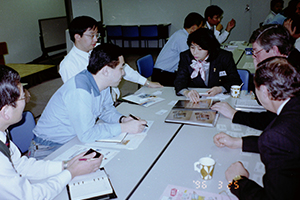
Making things clear to Japanese customers.
Our clients simply wanted sales. But they had to learn how to prepare, how to manage the meetings, how to avoid misunderstandings, how to follow up, and what not to do. In this way we were definitely part of the sales process but not direct salesmen. We would introduce and help UK companies. We were a non-partisan source of information to Japanese companies. This kept the door of their design centres open to us, and we would often be asked for advice such as “do you know any UK company who does X?”
Japanese companies had good networks, research offices and technology scouting operations in the United States, but often didn’t know what was available in the UK. Together with the embassy and the consulate-general we were able to explain what Britain could provide. Our Japanese staff consisted of retired employees of Japanese companies who had worked in the UK or US. Our first and most senior staff member was Awaya Takahiko, who had been design director for Panasonic TV in the UK. They were not employed to sell British products. Their role was to act as links and intermediaries with Japanese business. The retired manager of the Philips liaison office in Tokyo, Tanaka Hisao, joined us from the start of this venture; his reputation and contacts gave us additional gravitas in Japan.
